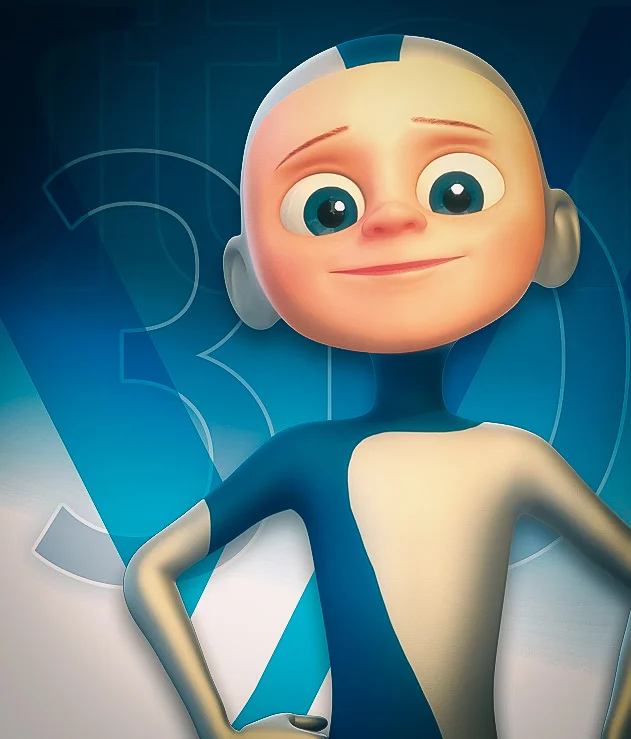 Image: Valery Vasilyeu (Motion Array)
Image: Valery Vasilyeu (Motion Array)
Author: VANAS Team
Don’t Blame Film Execs, Blame The Audience
Table of Contents
- The Blame Game in Hollywood
- What the Audience Really Wants
- Why People Stay Away from Some Movies
- When Movies Listen — and Win
- Animation Is the Perfect Example
- Telling Better Stories, Not Just Louder Ones
- How Creators Can Respect the Audience
- Frequently Asked Questions
1. The Blame Game in Hollywood
Imagine going to the movies, watching a film that doesn't quite land — maybe the jokes fall flat, the story feels rushed, or the characters don’t seem real. Then the next day, you hear the director say the movie failed because “audiences just didn’t get it.”
That happens a lot.
When films don’t perform well, some directors or studio executives say it’s the audience’s fault. They say people only want superhero movies. Or that people don’t have the patience for complex stories. Some even say that if a movie with a female lead fails, it's because men don’t want to watch it.
But is that really fair?
The idea of blaming the audience — instead of looking at what the movie actually offered — has become common in Hollywood. And it’s starting to hurt the way stories are told, especially in animation.
2. What the Audience Really Wants
Let’s be honest — audiences want good stories.
Whether it’s a superhero movie, a quiet drama, or a wild animated fantasy, people go to the movies to feel something. They want to laugh, cry, be surprised, or learn something new. They want characters they care about and stories they’ll remember.
People don’t go to the movies hoping to be disappointed. So when a film doesn’t connect, it’s usually not because the audience was “wrong.” It’s often because the movie didn’t do its job.
3. Why People Stay Away from Some Movies
Think about a few recent big movies that didn’t do well. Some had huge budgets, famous actors, and lots of special effects — but still flopped.
Why?
Because the story felt boring. Or because it seemed like the movie was made just to follow a trend, not because someone had something real to say.
Sometimes, films focus more on what they think the audience wants — like explosions, famous cameos, or loud action — and forget to build characters we care about.
Other times, the marketing promises one kind of movie, but what people get is totally different. That makes viewers feel tricked, and they don’t return the next time.
4. When Movies Listen — and Win
But here’s the good news: when filmmakers respect the audience and focus on telling strong stories, the results are amazing.
Look at a few movies that did it right:
- A sequel about fighter jets turned into a heartfelt story about honor, teamwork, and facing your past. People loved it.
- A scary movie about a smiling curse was small and quiet — but it was smart, new, and full of surprises.
- A comedy about food and class turned into a thriller that got people talking for weeks.
None of these movies blamed the audience. They just gave people something real — and the audience showed up.
5. Animation Is the Perfect Example
Animation has always understood the audience better than most. Think about how animated movies make you feel — joy, sadness, fear, excitement — often all at once.
Great animated films don’t talk down to kids or try too hard to please adults. They respect everyone watching. That’s why they work.
Animated characters can be anything — toys, animals, robots, even feelings — but the emotions they share are real. The best animations know that their audience is smart and emotional, no matter their age.
At VANAS Online Animation School, we teach students that animation is storytelling. And storytelling only works when it starts with respect for the audience.
6. Telling Better Stories, Not Just Louder Ones
It’s not about being bigger or flashier. It’s about meaning.
A scene doesn’t have to be packed with explosions if it has a powerful message. A character doesn’t need to fly if they can make you cry with just a few words.
Filmmakers sometimes forget that. They try to impress, not connect. And when the movie fails, they look for someone to blame — often the audience.
But the truth is, audiences notice when something is fake. They can tell when a movie cares about them and when it doesn’t.
7. How Creators Can Respect the Audience
So what should filmmakers and animators do?
- Tell the truth. Even in fantasy stories, the emotions should feel real.
- Be original. Don’t just copy trends. Take risks and say something new.
- Focus on people. Great stories are about relationships, not explosions.
- Listen. Pay attention to what audiences love, but stay honest in your vision.
- Work hard on the story. Good animation starts with a great script.
If we stop blaming the audience and start respecting them, we can create stories that matter.
VANAS Online Animation School offers Animation, Visual Effects, and Video Game programs. To launch your career, visit VANAS Online Animation School.
8. Frequently Asked Questions
Why do some filmmakers blame the audience when movies fail?
- Because it’s easier than admitting the story or direction didn’t connect. But blaming the audience rarely solves the real problem.
Do audiences only care about superhero movies?
- No. People like all kinds of stories — as long as they’re well-told. Many small, quiet films have been very successful.
Is animation just for kids?
- Not at all. Animation is a powerful storytelling tool for all ages. It can be funny, emotional, deep, or even scary.
Can animated films succeed if they take creative risks?
- Yes. Some of the most successful animated films took big risks — and audiences loved them for it.
How can I learn to tell stories that respect the audience?
- By studying storytelling, practicing your craft, and learning from experienced professionals. That’s what we teach at VANAS.







